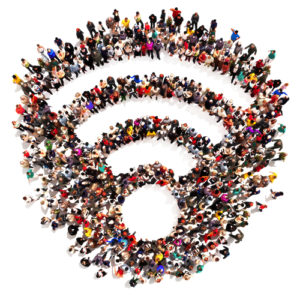Once a futuristic concept, artificial intelligence (AI) is starting to make its mark in the world, whether it’s helping diagnose diseases, automate manufacturing, personalize retail interactions, or assist a smartphone user in navigating city traffic.
At Dartmouth College in New Hampshire, we’re harnessing AI for what has become a very important priority for us and all universities: providing better campus wi-fi.
The ubiquitousness of campus wi-fi
It’s a fact of life for higher-ed institutions today that outstanding digital service has become a crucial vector for the overall quality of life on campus, intertwined with the learning experience and student satisfaction.
Ninety percent of Dartmouth’s 4,500 undergrads live on the Hanover campus. This is their home, wi-fi is by far their primary internet access method, and they expect it to work seamlessly—in the classroom, the dorm, wherever they may be—whether it’s to email a paper due the next day or stream Stranger Things on Netflix.
Our faculty also expects the wireless to perform at the level they are accustomed to from a wired network as they increasingly adopt online techniques in the lecture hall, from online exams to visual content accessed via Apple TV to even smart speakers and digital voice assistants like Amazon Alexa.
Furthermore, Dartmouth envisions a highly automated campus of the future where AI combined with the Bluetooth Low Energy (BLE) capabilities in smartphones can interact with wireless beacons to, say, give turn-by-turn directions inside campus buildings, issue notifications about a special promotion at the bookstore, or guide museum tours. Such applications will only keep raising the stakes for wireless network quality.
Improving the campus wi-fi experience
However, Dartmouth, like so many other universities, was saddled with an aging wireless infrastructure that practically guaranteed a lousy wi-fi experience.
Related: 9 critical steps to wi-fi innovation
The typical network on college campuses across America is based on an architecture designed more than a decade ago, before the advent of ubiquitous wireless devices, social media, and streaming services that have drastically increased what users ask of and expect from WLANs.
In an era when the promise of technology is so often defined by the word “smart,” these obsolete networks are dumb. They’re unable to provide visibility into the service levels that users are experiencing and they force administrators into the slow, painful task of manually sifting through a plethora of computer-generated logs scattered across the IT stack to determine where and why a problem occurred before they can fix it.
A variety of vendor tools has become available through the years to try to attack the problem, but they tend to be hard to use, require a great deal of special knowledge (way beyond the skills of a typical Help Desk staffer), and, in the end, still take too much time and effort to pinpoint the root cause of wireless issues. As a network engineer, I want us to be able to know instantly that it took eight seconds for the user to connect because the DHCP server had a problem, without jumping through four intermediate systems and a central log collector to try to figure it all out.
How next-generation networks work
What we’ve learned at Dartmouth is that a new generation of network—one powered by AI and automation—can help us diagnose issues across campus at a radically greater pace and scale than was possible with our old manually-driven WLAN.
We purchased an AI-driven wireless network from Mist, which does what a human couldn’t possibly do: collect 150 pieces of information every two seconds about what every wi-fi user is experiencing. That data is then analyzed in the cloud using machine learning, and the system immediately returns detailed information about the problem’s source and root cause.
This advanced level of troubleshooting allows us to do something that was unheard of in the old architecture: establish wi-fi service-level baselines for initial connection, roaming time, and other inflection points. For example, we can delineate that it should take no more than two seconds for a smartphone user in the Wheeler residence hall to access the wi-fi, know right away if it took longer, and see in a clear, easy-to-read format what exactly in the network went wrong.
Related: How better campus wi-fi can prevent a student zombie apocalypse
The system is true AI in that it learns over time and can predict issues even before they happen, which adds a self-healing element to the WLAN. The technology we acquired even has a Siri-like “virtual network assistant” that uses natural language processing to provide network administrators with answers to questions such as, “How are the wi-fi access points in Baker-Berry Library performing?”
Since the new Mist wireless network came online, complaints to the help desk have plummeted. And when complaints do come in, help desk reps are usually more able to handle them independently, without having to hand them off to the network services team.
Dartmouth may seem a natural to be an early adopter of an AI-driven campus WLAN. After all, the field of AI research was born at a workshop organized by a Dartmouth professor on the campus in 1956. However, any university should consider the implementation of an AI-powered network as part of a broader digital transformation initiative that will better serve the university community in the digital age.
- A bungled FAFSA rollout threatens students’ college ambitions - April 19, 2024
- Using real-world tools to prepare students for the workforce - April 18, 2024
- 8 top trends in higher education to watch in 2024 - April 16, 2024

